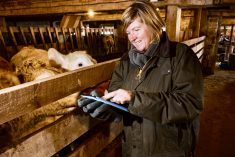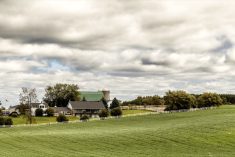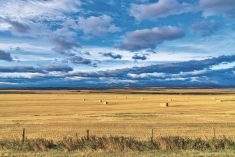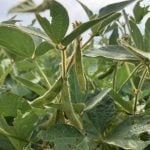Input costs. Tariffs. Commodity prices. A lot of variables are moving quickly this season, and mostly not in the right direction. Monday’s short-term cash forecast scenarios are out of date by Friday, and long-term projections are anyone’s guess.
What can Canadian farmers do in the short run to protect profits (and sanity) in this uncertain season?
Country Guide talked to four farm advisors from around the country to gather advice for the 2025 crop year.
Read Also

The big squeeze: How to be fair to siblings during farm succession
Managing sibling business relationships on family farms.
Hold on to your vision
Lacey Frizzell is part of a small cash crop and feedlot operation at Sterling, Ont., as well as a strategic organizer and consultant. Frizzell recommends making sure that, whatever you do this season, you have a vision for your farm and keep it top of mind while you assess your situation and (maybe) make some tough choices.
“Where do you want your farm to go over the next year or the next five or 10 years?” she asks. “You have to plan these things, because they don’t just happen.”

With your vision in mind, it’s easier to assess opportunities, and make sure what you’re doing aligns with your lifestyle and your goals.
Look at your past results, she says. “Are there unprofitable segment lines in your business? Maybe it’s time to retire them.” For example, if soybeans aren’t making sense, move them out of the rotation. Or “maybe it’s time to walk away from some of the higher paid rented ground that is not productive.” For crop farmers, Frizzell suggests “breaking it down field by field, and valuing your productivity.”
Frizzell has a list of common-sense suggestions to lower costs during a cash crunch. She knows that at first this isn’t easy, but she says, “Reduce labour costs where applicable.”
Extra tillage equipment is the type of machinery that could be sold for some extra cash (after consulting with your accountant about the potential for recaptured depreciation that could increase your taxes). Instead of buying new equipment, “maybe it’s time to look into renting or leasing, or doing co-operative purchases, or borrowing from a neighbour.”
Analyzing your purchases can make a big difference. Frizzell’s feedlot works with an independent nutritionist. This year, when their nutritionist tendered out their mineral account, they found a wide variation in prices for the same product. Of course this isn’t always the case, and it’s important to do all the research before switching suppliers. “Always make sure you’re comparing apples to apples,” Frizzell says.
Lower fertilizer or fuel prices can have a big impact on short-term profits. Phoning around to local competitors for a price is one solution. Or, she says, if you’re a loyal customer, “maybe it’s about having a conversation with the supplier. Let them know you’re not happy with the rate.”
Insurance is an input that farmers don’t always remember to shop around for regularly. It’s also a good idea to review your banking package. “You should always have relationships with two different banks,” Frizzell advises. “You don’t know what you don’t know.”
Having a great accountant is another way to save money (though you might not say that while you’re paying your accounting bill). Good accountants “know all the ins and outs,” Frizzell says, “on everything from rebates to recapture.”
A key component of cost cutting is to “be curious about why you’re doing something.” Make sure you’re doing things efficiently, and that the work you’re doing fits with your vision for the future of your farm. “The most costly thing I see is doing something the way it’s always been done,” says Frizzell.
Put your soil to work
Shawn Catherwood is a farmer in southeast Saskatchewan and the founder and CEO of Spur Line Crop Solutions. He’s looking for ways to cut expenses this year but also keeping his eye on soil health.
For the past few years, Catherwood has been focusing on regenerative practices. “When you start applying these practices seriously, not just thinking about them in a theoretical way, the soil takes care of everything else, which includes your pocketbook.”
Rather than relying on adding more fertilizer to increase yields, Catherwood has been diversifying.
He added a cover crop to his rotation as a cash crop, “selling the forage for some revenue.” He doesn’t have animals, but another farmer’s cattle grazed the regrowth in Catherwood’s field in the fall, extending their grazing season.
With choices like this, he says, “You can see the soil actually starting to work for you.” He’s been able to cut fertilizer rates on his farm, though he doesn’t recommend doing this cold turkey.
“I know it’s not a sexy story,” he says. “This is a long-term process. Ideally, everyone should’ve started doing this 10 years ago.”
Catherwood is trying to take in the whole picture. “I’m not growing crops for maximum yield.” Instead, he’s trying to maximize net revenue.
Besides cover crops, Catherwood is intercropping: chickpeas with flax; mustard with peas. When he plants mustard with peas, he can reduce his fertilizer bill to almost nothing. “Just a little bit of starter to get it going.”
By focusing on soil, he says, “We’re using diversity to grow more with less.”
Catherwood has used federal and provincial grant programs to fund parts of his conversion to regenerative agriculture. “It’s been a huge help for our operation,” he says.
After a couple of dry years in southeast Saskatchewan, he says, “You naturally start to get a little bit negative.” But instead of complaining, he believes in making changes to make things better. “There’s a lot we can do about it. It’s exciting to see where we’re going.”
Hope for the best, prepare for the worst
Farm consultant Scott Gillespie is also focused on soil. In fact, he named his consulting company Plants Dig Soil. But with most of his southern Alberta clients under irrigation, drought is not his biggest challenge.

Gillespie is not encouraging most of his customers to cut back on fertilizer rates to save money this year. But he says, “It depends on how you’ve been able to build up nutrient supplies over the years.” Some farms will be more resilient than others. For example, there may be opportunities to cut back phosphorus rates, as long as you replace it over a five- or 10-year span. “It’s one that we can lower rates and kind of mine the soil a bit.”
Gillespie is making sure his clients are prepared for supply chain challenges this year. He saw the pandemic as a good wake-up call; now he’s guarding against a tariff war, or difficulties getting supplies out of the U.S. He likes to make sure his clients have a Plan B: “What would happen if you couldn’t get the herbicide you wanted?”
In many cases, farmers could use generic products to fill gaps in the supply chain, but, Gillespie says, “Even if the price is good and you can get it, make sure the quality is there.”
Some farmers may need to resort to tillage to control weeds. “If you have to use tillage, you have to use it,” he says.
If you are short on inputs due to supply problems or cash problems, Gillespie suggests “leverage your data.” If you don’t have good data for your fields “maybe this is the year to get into that.” Having good field data allows farmers to “prioritize which acres to put the money into.”
If you have acres that don’t generally make money, he says this could be a good year to use as a soil health year. This would mean planting a cover crop or establishing perennials in that area to deal with salinity.
Gillespie also suggests looking into federal and provincial programs to help finance changes to the way you’re farming. “It’s the perfect time for it,” he says.
Don’t keep it to yourself
Art Lange’s AJL Consulting is based in northern Alberta, east of Edmonton. He warns farmers, especially in the grains industry, to be very careful about new purchases these days. “The allure of land for sale near what you already have is very strong,” he says. “But be very, very careful about that and do some really good projection work.”
Lange has experience working with farm financial distress solutions. Many situations he’s seen could have been avoided with better projections. “Most of the distress situations are because people have bought land or machinery and not really pencilled out how they’re going to pay for it.”
The situation can change quickly. “At $20 canola, it’s one financial scenario. At $14, or $15 canola, it’s a totally different scenario,” Lange says. “See if you can actually cash flow the purchase with a margin of safety built in.”
Some purchases cannot be delayed. “If you have to buy something, try and buy it used, if possible. But I know that can be really, really difficult.”
Lange says cash flow projections are really important “especially if you’re working close to the line like some people are these days.”
If you do see a problem coming, try to reduce expenses “before you hit the brick wall.” For example, he says, “Reducing fertilizer may not be a wise thing to do, but that may be what you have to do.”
Some farmers keep their financial worries to themselves. “That’s not a good way to go, especially if you’re part of a farm team.”
If you fall into a cash crunch, Lange says, “Make sure you have a discussion with the rest of your farm team.” They need to know it’s going to be a tough year, and that big expenditures are not in the budget.
Letting your team know what you’re up against lets you share the burden. And Lange says they might have ideas.
As well as your farm team, he says, “You’re going to have to talk to the banker, and do so sooner rather than later.”
Will you need an increased operating loan limit? Can you get one? Remember, he says, “At least one time during the year your operating loan should be positive. It shouldn’t be all in the red continuously.”
If you find yourself with a long-term operating loan and an ever-increasing balance, Lange says, “That’s the sign of a real financial time bomb ready to go off. At some point this whole thing is going to blow up.”
If you’re in this situation, you can look for alternate credit sources. But first, “get a hold on your finances and make sure you know how much you owe.”
Lange recalls working with a farmer who was surprised to see the long list of current, intermediate and long-term liabilities on his net worth statement. “I don’t owe that much money!” the farmer insisted. Liabilities can creep up.
A first step in managing your finances is making sure you know when your bills and loan payments are due and developing a plan to make those payments on time. “If you’re not going to be able to do that, you better have a talk with those creditors.”
















